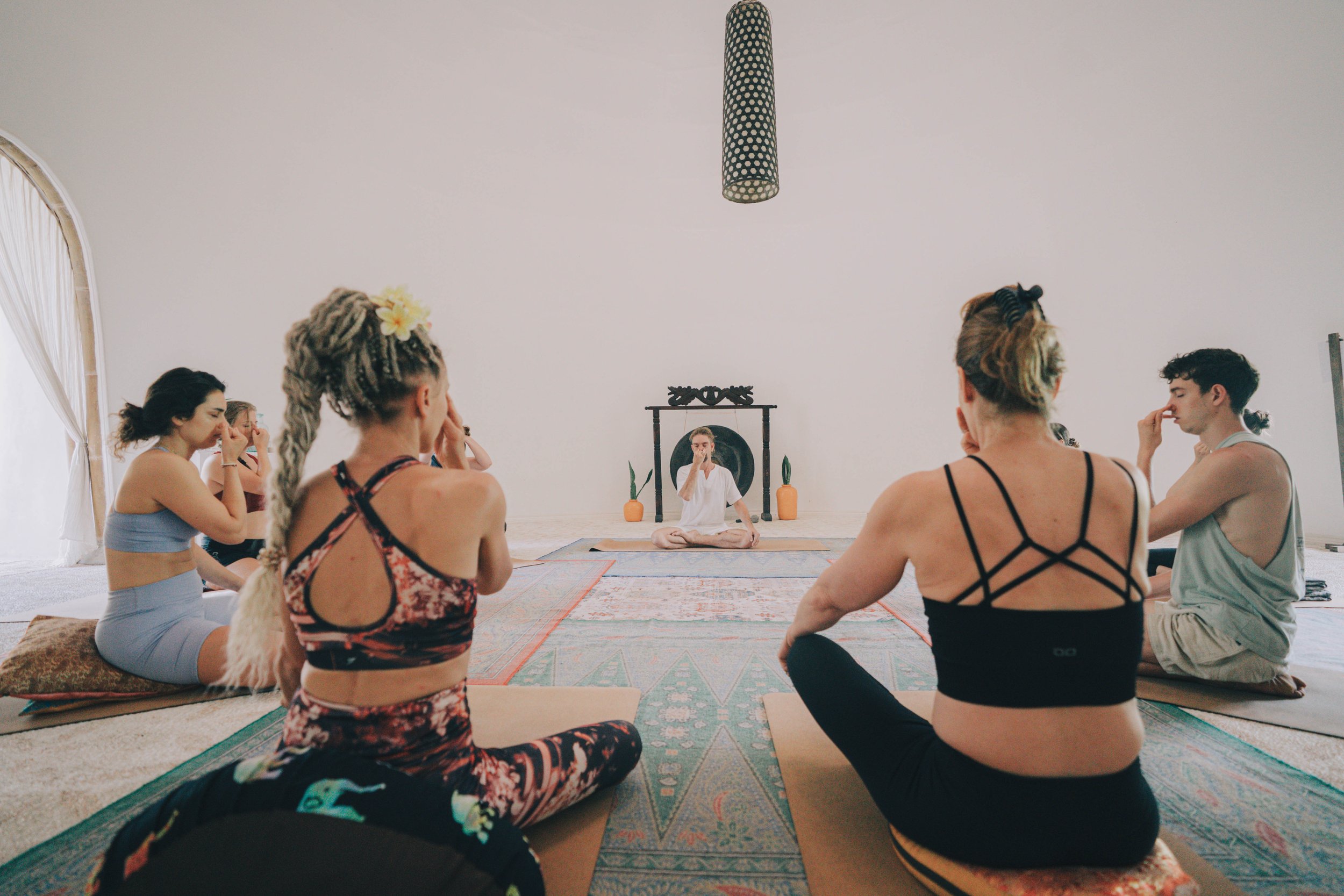Kapalbhati and Shuddhi Kriyas: The Yogic Cleanse for Body and Mind
In the world of Yoga, cleansing isn't just about food or lifestyle changes. It goes deeper—into the breath, the muscles, and even the mind. The ancient yogic system includes a set of powerful practices known as Shuddhi Kriyas, or purification techniques. Among them, Kapalbhati stands out as one of the most widely practised and misunderstood.
This article will guide you through the foundations of Shuddhi Kriyas, the role of Kapalbhati, and why these traditional practices are still highly relevant today.
What Are Shuddhi Kriyas?
Shuddhi Kriyas (also known as Shatkarma in classical texts) are ancient yogic cleansing techniques designed to purify the internal systems of the body. Traditionally, they are practised to prepare the body for higher states of meditation and spiritual growth. However, their physiological and psychological benefits make them extremely valuable even for those simply seeking better health.
There are six main types of Shuddhi Kriyas mentioned in the Hatha Yoga Pradipika:
Neti – nasal cleansing
Dhauti – cleansing the digestive tract
Nauli – abdominal massage and churning
Basti – colon cleansing
Kapalbhati – frontal brain cleansing
Trataka – fixed gazing for mental focus
Each kriya works on different systems of the body, targeting the digestive, respiratory, and nervous systems. Beyond physical cleansing, many kriyas also train the practitioner to overcome fear, develop internal awareness, and regulate emotional responses.
Kapalbhati: More Than Just a Breathing Technique
Kapalbhati is often incorrectly labelled as a pranayama, or breath control technique. In fact, it is a Shuddhi Kriya, primarily aimed at cleansing and energising the frontal region of the brain.
The word kapalbhati translates as "skull shining"—a reference to the sense of clarity and brightness practitioners often feel after regular practice. Rather than controlled, even breaths, Kapalbhati involves passive inhalation and forceful exhalation driven by rapid contractions of the abdominal muscles.
Key points for safe and effective practice:
Only the abdomen should move; keep the chest and shoulders relaxed.
The diaphragm is the primary muscle involved.
Keep the spine upright to allow for proper movement and energy flow.
Practise on an empty stomach and consult a qualified teacher, especially if you have health conditions.
The Benefits of Kapalbhati
Physical Benefits
Stimulates the digestive glands and enhances metabolism
Improves circulation and oxygen intake
Gently massages internal organs
Helps reduce respiratory issues and clears nasal passages
Mental Benefits
Kapalbhati has a unique effect on the nervous system. By promoting the expulsion of excess carbon dioxide, it leads to a subtle "shock" that activates calming neurotransmitters in the brain. This can be particularly helpful in moments of anxiety or stress—many find it useful before public speaking or important events.
Emotional and Energetic Control
Consistent practice requires awareness, discipline, and the ability to remain calm under effort. This trains the nervous system to better handle stress and fosters greater self-regulation and emotional resilience.
The Three Layers of Shuddhi Kriyas
At SKY Yoga and Meditation, we teach that Shuddhi Kriyas impact more than just the physical body. These techniques also influence mental patterns and emotional states through three main pathways:
Cleansing the Internal Organs
Beyond nasal passages or the digestive tract, kriyas like Neti, Dhauti, and Kapalbhati help stimulate glands, reduce phlegm, and remove toxins from the body. For example, research has shown that nasal cleansing techniques can assist in managing sinusitis, allergic rhinitis, and respiratory issues.
Gaining Control of Internal Muscles
These practices help you become aware of subtle internal processes—movements and sensations that often go unnoticed. With time, this heightened awareness allows for early detection of imbalance and can even prevent disease by improving your ability to listen to your body.
Developing Mental Strength and Fear Control
Some kriyas are challenging or slightly uncomfortable at first, such as Nauli or Dhauti. Learning to approach them calmly builds mental strength and reduces fear-based reactivity. This has long-term benefits in building a more stable, focused mind.
Why It Matters Today
In modern life, we face overstimulation, pollution, poor posture, and emotional burnout. Shuddhi Kriyas—especially practices like Kapalbhati—offer a simple yet profound way to reset your system.
They do more than cleanse. They reintroduce a sense of balance and control, helping you feel lighter, clearer, and more present.
Learn and Practice with Guidance
If you're new to Kapalbhati or other kriyas, proper guidance is essential. At SKY Yoga and Meditation, our courses and teacher training programs include practical, step-by-step instructions grounded in both ancient wisdom and modern science.
These are not just techniques—they are tools for transformation.
Join our 200hr or 300hr Yoga Teacher Training in Bali, where Shuddhi Kriyas are taught as part of a holistic, experiential curriculum. Discover how ancient cleansing techniques can change the way you breathe, move, and live.
For more details or a fast answer to your questions, send us an email or WhatsApp us directly.





